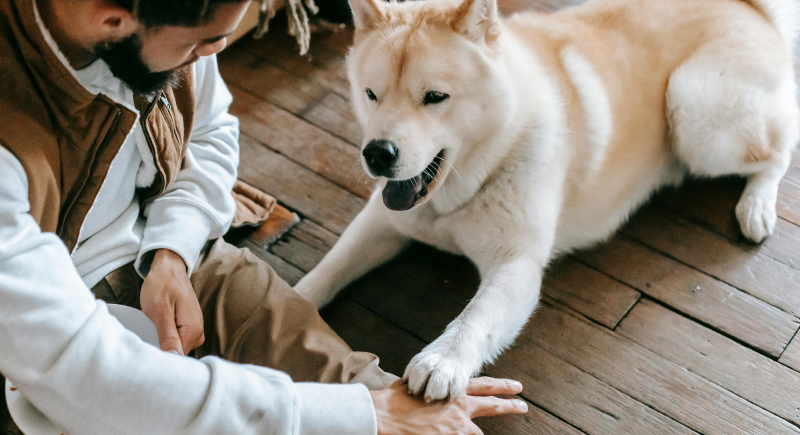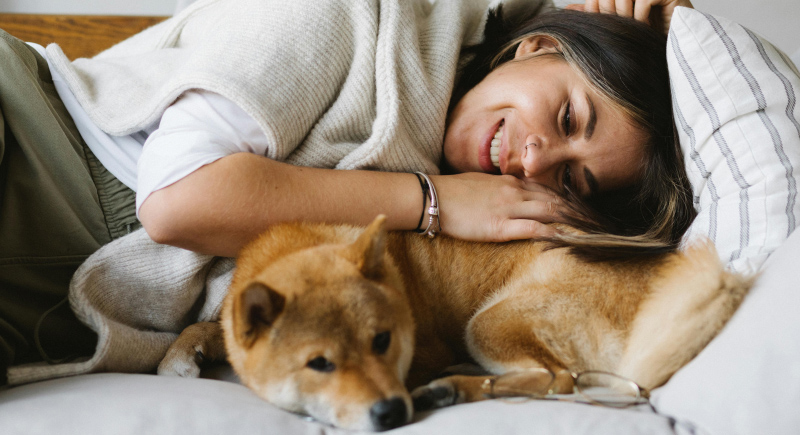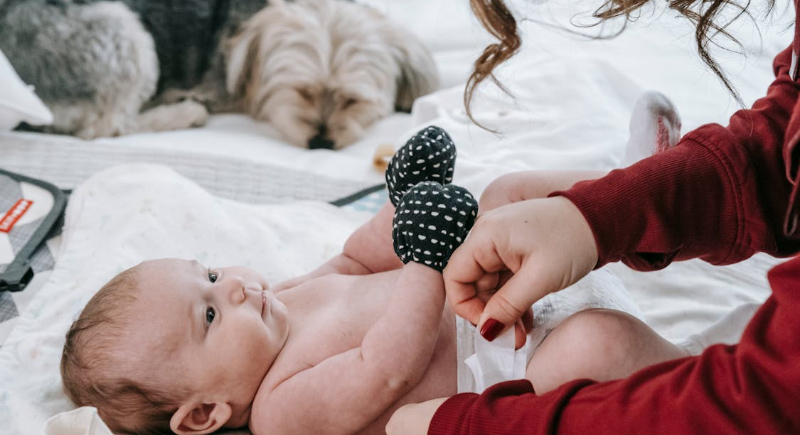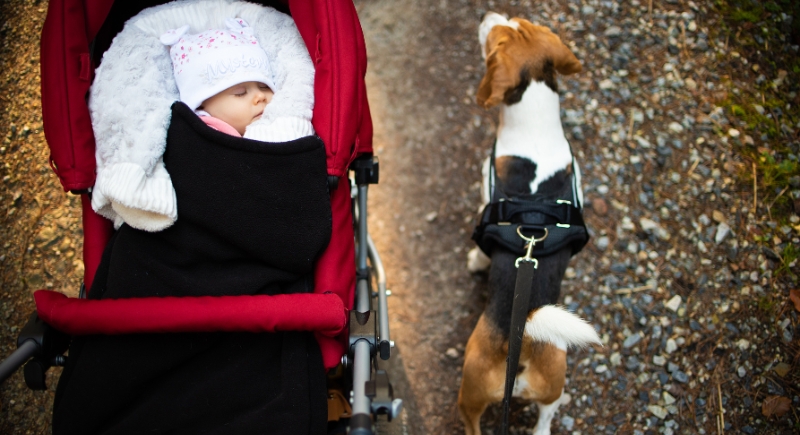Introducing Your Pet to a New Baby? Do These Things First
Introducing a new baby to your pet takes preparation, patience, and understanding. By making thoughtful adjustments and using positive reinforcement, you can help your pet feel secure and included. These tips ensure a smooth transition, allowing your family to grow together while maintaining harmony in your home.
Start Preparing Before the Baby Arrives

Credit: pexels
Gradually introduce changes in your pet’s environment weeks before the baby’s arrival. Set up the crib, stroller, and other baby gear to familiarize them with new sights and smells. Allow them to sniff baby blankets or toys under your supervision, helping them feel comfortable with the changes ahead.
Establish a Consistent Routine

Credit: pexels
Create a schedule for feeding, walking, and playtime that can continue after the baby comes home. Pets thrive on predictable routines, so keeping their day-to-day activities consistent minimizes stress. Sticking to this structure reassures your pet that their needs are still a priority, even with a new family member.
Expose Your Pet to Baby Noises

Credit: pixabay
Play recordings of crying, giggling, and other baby sounds at a low volume. Gradually increase the volume over several days while observing your pet’s reaction. Reward calm behavior with treats or praise. Familiarizing them with new sounds early on reduces fear and makes the transition smoother when the baby arrives.
Introduce the Baby’s Scent First

Credit: pixabay
Bring home an item, like a blanket or onesie, with the baby’s scent before the introduction. Allow your pet to investigate it while encouraging calm, gentle behavior. Offering a treat helps create a positive association. Recognizing the baby’s smell in advance helps your pet feel less uncertain during their first meeting.
Set Up a Safe Retreat for Your Pet

Credit: pexels
Designate a quiet space in your home where your pet can retreat when they feel overwhelmed. Include their bed, favorite toys, and water to create a comforting sanctuary. Giving them a safe place to decompress reduces anxiety and gives them control over their environment during the adjustment period.
Reinforce Basic Commands

Credit: pexels
Brush up on training commands like “sit,” “stay,” and “leave it” to manage your pet’s behavior around the baby. Practicing these skills regularly helps set clear boundaries. Reward their cooperation with treats and praise, ensuring they understand the right way to interact in the new family dynamic.
Supervise the First Meeting

Credit: pexels
When introducing your pet to the baby for the first time, keep the encounter calm and controlled. Allow your pet to observe the baby from a safe distance, gradually moving closer if they remain relaxed. Stay positive and reassuring to help your pet associate the baby with calm, happy feelings.
Use Positive Reinforcement

Credit: pexels
Reward your pet with treats, praise, or extra attention whenever they behave well around the baby. Positive reinforcement encourages them to associate the baby’s presence with good things. This approach helps your pet feel included and appreciated as they adjust to the changes in the household.
Limit Access to Certain Areas

Credit: pixabay
Create boundaries by designating baby-only zones, such as the nursery or playmat area. Use baby gates or closed doors to keep your pet out of spaces where the baby sleeps or plays. Establishing clear rules ensures the baby’s safety while helping your pet understand where they are welcome.
Keep Baby Items Secure

Credit: pexels
Store baby items like pacifiers, bottles, and toys in places your pet can’t access. Chewing or swallowing these objects can be harmful to pets. Keeping baby belongings organized prevents accidents and teaches your pet to respect the baby’s space and possessions.
Maintain One-on-One Time

Credit: pexels
Set aside time each day to bond with your pet, even after the baby arrives. Whether it’s a short walk, a cuddle session, or a game of fetch, your attention reassures them that they’re still loved. Consistent quality time reduces feelings of jealousy or neglect as your family grows.
Avoid Forcing Interactions

Credit: pexels
Allow your pet to approach the baby at their own pace. Forcing them into close contact can cause anxiety or fear. Give your pet the time and space they need to adjust, and let positive interactions happen naturally. Respecting their comfort level builds trust and promotes a healthier relationship.
Gradually Increase Interaction

Credit: pexels
Include your pet in activities like sitting beside you during feedings or stroller walks around the neighborhood. Allowing your pet to be part of these routines helps them accept the baby as part of the family. Gradual exposure encourages your pet to feel connected without overwhelming them.
Stay Calm and Patient

Credit: pexels
Pets are sensitive to their owners’ emotions. Staying calm and relaxed helps your pet remain at ease during this transition. Be patient as they adjust to the changes, offering gentle encouragement when they behave well. A steady and reassuring approach makes the process smoother for everyone.
Monitor Your Pet’s Behavior

Credit: pexels
Pay attention to changes in your pet’s behavior, such as restlessness, loss of appetite, or clinginess. These signs may indicate stress or discomfort. Offer comfort, praise calm behavior, and consult your vet if needed. Keeping a close eye ensures you address concerns quickly and help your pet adjust successfully.
Reward Calmness During Diaper Changes

Credit: pexels
When changing the baby’s diaper, involve your pet by rewarding calm behavior. Use treats or praise when your pet stays relaxed during this time. Diaper changes may be a frequent and noisy event, so reinforcing positive behavior helps your pet associate the baby’s care routine with calm moments and a sense of security.
Train for the Stroller Walk

Credit: Canva
Before venturing out with the stroller, practice walking with it around the house or yard. Bring your pet along on a leash to get them used to the stroller’s movement and sounds. Gradually increase your walk time to help your pet adjust to the stroller’s presence and enjoy outings together.